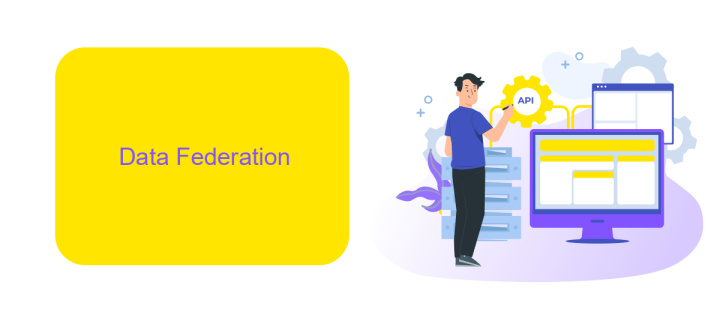What Are Data Integration Techniques
Data integration techniques are essential for combining data from different sources into a unified view, facilitating better decision-making and analytics. In today's data-driven world, understanding these techniques is crucial for businesses aiming to leverage their data assets effectively. This article explores various data integration methods, their benefits, and how they can be applied to enhance organizational performance.
Introduction
Data integration is a crucial aspect of modern business operations, enabling organizations to unify disparate data sources into a cohesive and actionable dataset. Effective data integration ensures that data from various systems, applications, and databases can be combined and analyzed to provide comprehensive insights and support decision-making processes.
- Combining data from multiple sources
- Ensuring data consistency and accuracy
- Facilitating real-time data access
- Improving data quality and governance
With the growing complexity of data environments, leveraging robust data integration techniques is essential. Tools like ApiX-Drive simplify the integration process by offering automated workflows and seamless connectivity between different applications. By utilizing such services, businesses can streamline data management tasks, reduce manual intervention, and enhance overall operational efficiency.
Data Federation

Data Federation is a technique that allows disparate data sources to be queried as if they were a single entity. This approach provides a unified view of data without the need for physical consolidation. By creating a virtual database, data federation enables real-time access to information stored across multiple systems, enhancing decision-making processes and operational efficiency. It is particularly beneficial for organizations that need to integrate data from various platforms, such as databases, cloud services, and legacy systems, without the complexities of traditional data warehousing.
One of the key advantages of data federation is its ability to streamline data integration efforts. Tools like ApiX-Drive can facilitate this process by providing seamless connectivity between different applications and data sources. ApiX-Drive offers a user-friendly interface to set up integrations quickly, reducing the time and technical expertise required. By leveraging such services, organizations can achieve a cohesive data environment, ensuring that relevant information is readily accessible and up-to-date across all business functions.
Data Replication

Data replication is a crucial technique in data integration that involves copying data from one location to another to ensure consistency, reliability, and accessibility. This process can be particularly useful for businesses that require real-time data availability across multiple systems or geographical locations. By replicating data, organizations can minimize downtime, enhance disaster recovery, and improve overall data management.
- Real-time replication: This method involves continuously copying data as it is created or modified. It ensures that all systems have the most up-to-date information at all times.
- Scheduled replication: Data is copied at predetermined intervals, such as hourly or daily. This approach is suitable for systems that do not require real-time updates but still need regular synchronization.
- Transactional replication: This technique replicates only the changes made to the data, rather than copying the entire dataset. It is efficient and reduces the load on the network and storage systems.
One of the tools that facilitate seamless data replication is ApiX-Drive. This service allows businesses to set up automated data transfers between various applications and databases with ease. By using ApiX-Drive, organizations can streamline their data integration processes, ensuring that all systems are synchronized and up-to-date without manual intervention.
Data Warehousing

Data warehousing is a critical component in the realm of data integration, providing a centralized repository where data from multiple sources can be stored, managed, and analyzed. By consolidating data in one place, organizations can ensure consistency, enhance data quality, and facilitate more effective data analysis.
One of the primary advantages of data warehousing is its ability to streamline the data integration process. It allows businesses to aggregate data from various systems, such as CRM, ERP, and other operational databases, into a single, unified view. This holistic approach enables more informed decision-making and strategic planning.
- Improved data quality and consistency
- Enhanced data analysis and reporting capabilities
- Streamlined data integration from multiple sources
- Better compliance with regulatory requirements
Tools like ApiX-Drive can further simplify the data integration process by automating the transfer of data between different systems and the data warehouse. With its user-friendly interface and robust integration capabilities, ApiX-Drive helps businesses efficiently manage their data flows, ensuring that the data warehouse remains up-to-date and accurate.
Extract, Transform, and Load (ETL)
Extract, Transform, and Load (ETL) is a crucial process in data integration that involves extracting data from various sources, transforming it into a suitable format, and loading it into a target database or data warehouse. The extraction phase involves retrieving data from disparate sources such as databases, APIs, or flat files. This data is often inconsistent or incomplete, requiring significant cleaning and validation during the transformation phase. Here, data is standardized, enriched, and formatted to meet the requirements of the target system.
Once transformed, the data is loaded into the target database, where it can be used for analysis, reporting, or other business activities. Services like ApiX-Drive facilitate ETL processes by providing automated tools for data extraction and transformation, reducing the manual effort and time required. ApiX-Drive supports a wide range of data sources and offers customizable workflows, ensuring seamless integration and efficient data management. By leveraging such services, organizations can streamline their ETL processes, ensuring data accuracy and consistency across all systems.
FAQ
What is data integration?
Why is data integration important?
What are the common techniques used in data integration?
How can I automate data integration processes?
What challenges might I face during data integration?
Apix-Drive will help optimize business processes, save you from a lot of routine tasks and unnecessary costs for automation, attracting additional specialists. Try setting up a free test connection with ApiX-Drive and see for yourself. Now you have to think about where to invest the freed time and money!

